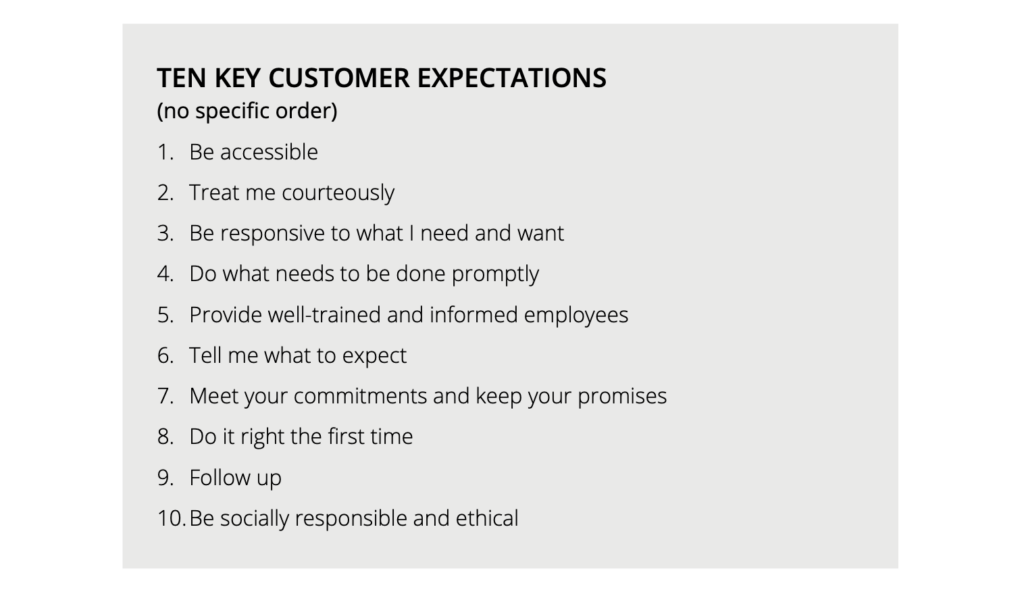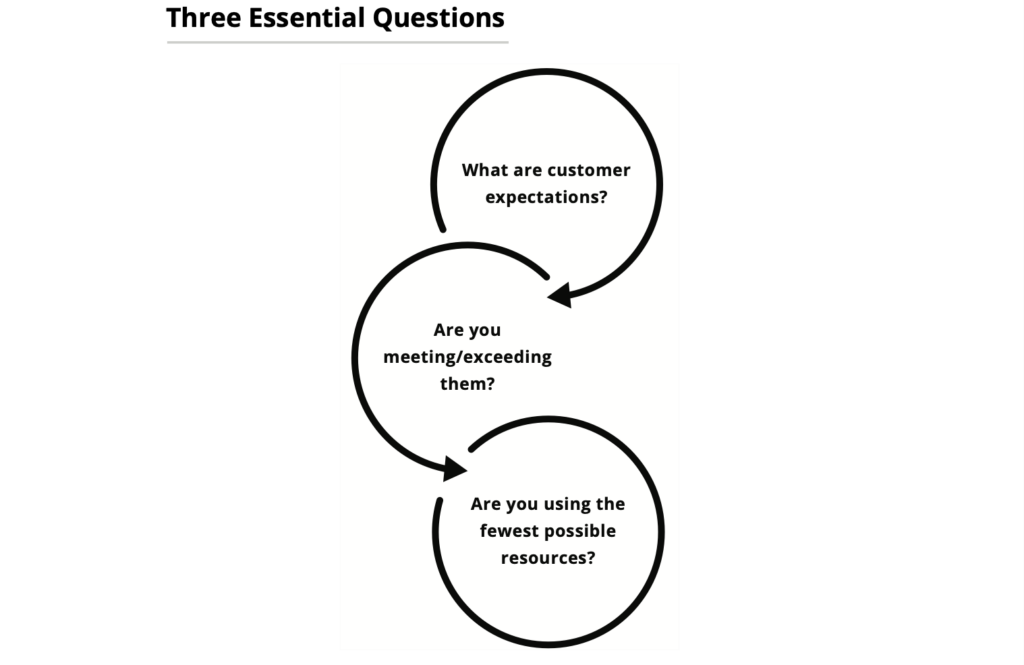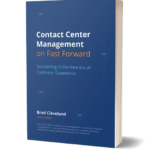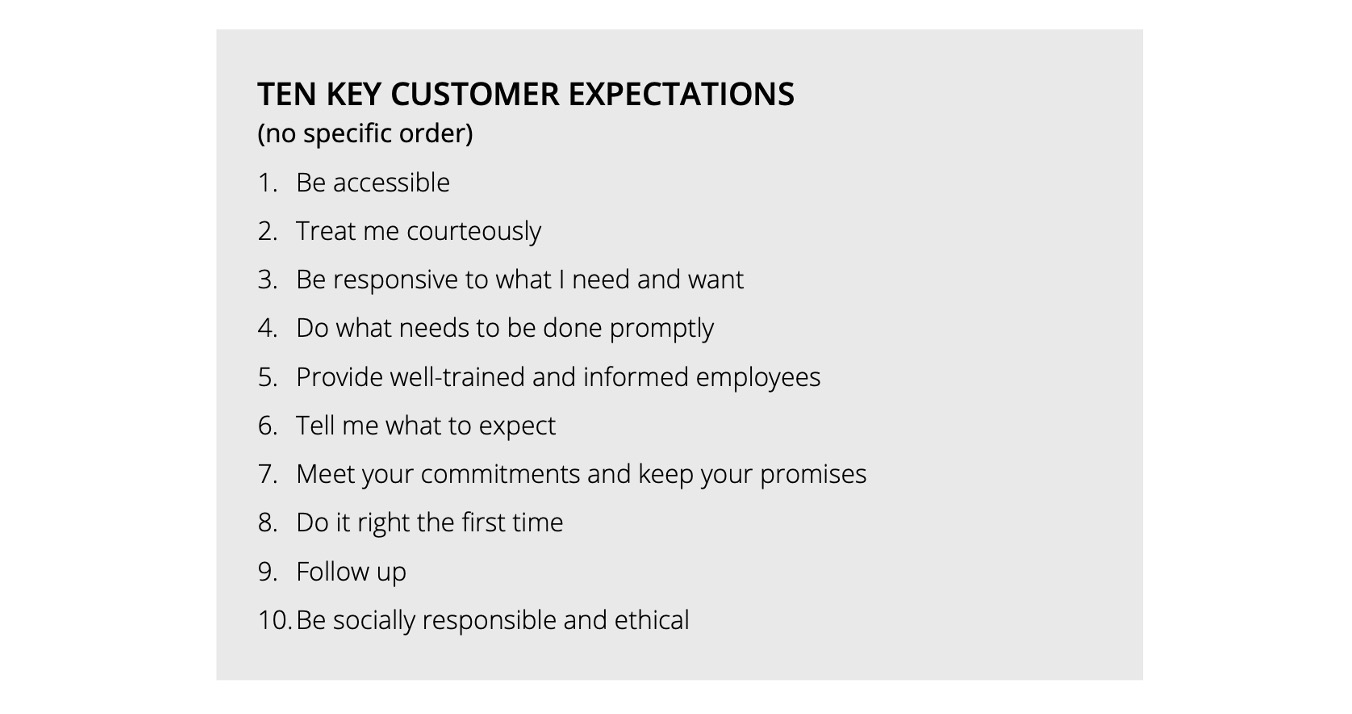The need to identify and address customer expectations stems from a widely accepted principle: improvements in customer satisfaction lead to increased customer loyalty, better business results and a stronger brand reputation. Consider the old adage about building the best-quality horse buggy in town: it doesn’t matter if no one wants it.
A lesser-known but similarly powerful principle is also at work: meeting customer expectations often translates into higher levels of service that are delivered at proportionally lower costs. Yes, more loyal customers save the organization lots of marketing dollars. But there’s more to it than that.

Take the simple issue of being courteous (one of the ten primary customer expectations). In today’s environment, that means such things as: don’t make customers repeat the same information, don’t transfer them around, and don’t make them go over their account history again. Customers don’t know (nor should they care) that these guidelines require processes and systems that deliver relevant information to the right agent at the right time. To them, it’s simply a matter of courteous service.
To the organization, however, meeting this expectation almost always translates into service that is more cost effective to deliver. Being responsive, handling contacts right the first time, relaying expectations to customers—everybody wins, including customers, employees, and shareholders.
Three key questions that should always be part of your decision-making process are: What are your customers’ expectations? Are you meeting or exceeding them? Are you using the fewest possible resources to do so?

Don’t guess at what your direction should be. Listen to what customers are saying in surveys, social media posts, feedback sites—doing everything you can to put yourself in their shoes. Above all, take every opportunity to listen to, engage with and learn from customers during interactions.

Excerpt from Contact Center Management on Fast Forward by Brad Cleveland.



0 Comments